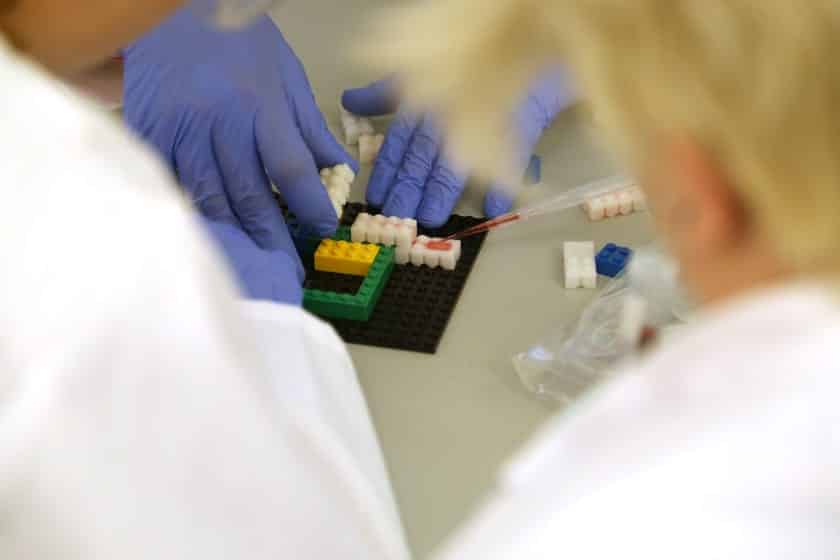Innovation can come from anywhere, but often it’s when the right people are in the right place at the right time.
Travis Tangen, WARF education and outreach manager of the Discovery Outreach team, wants to facilitate more of these connections and creativity through the Discovery Incubator.
The Discovery Incubator is the place where the UW–Madison community and members of the public can develop solutions and explore new ideas in science outreach. The structure includes weekly meetings with a fluid structure guided by the participants themselves—some weeks it’s more of a hands-on makerspace, other times an open forum with presentations and crowd-sourced feedback.
“The benefits of the Discovery Outreach mission is that we’ve enabled a lot of deep connections across campus in a way that makes us able to span boundaries,” says Tangen. “In doing so, we’re better able to support new connections between individuals that cross our path.”
The piece that ties all the incubator participants together: projects must have an outreach component for engagement in science. That could mean a scientist translating their research into an activity for a public event, an undergraduate creating an outreach tool for family science nights, or teachers developing new hands-on projects for the classroom.
“Those interested in outreach—whether they be undergraduates or postdocs or faculty—can get some support that they maybe weren’t even aware of,” says Tangen. “I can provide resources, give feedback on progressing work and identify existing structures to move projects along as efficiently as possible.”
Discovery Incubator
This fall, the Discovery Incubator will run on Thursdays from 2:30-4:30 p.m. at the Discovery Building in room 2280 (2nd floor teaching lab above Aldos).
For Ellen Arena, a postdoctoral fellow in medical engineering at the Morgridge Institute for Research, the Discovery Incubator helped her develop a new activity for Saturday Science, a free monthly event for children and families at the Discovery Building. Arena, a Wisconsin Idea STEM Fellow, works in the intersection of microscopy and bioimaging and saw an opportunity to share her work.
“Different microscopes take pictures of different scales and magnifications,” Arena says. “Part of my job is to talk to biologists and figure out the best method for the question they’re asking. How do you prepare your sample? What type of microscope do you use?”
The outreach activity she created helps community members explore the very questions scientists ask every day. Participants imagine looking at a tree from about 100 yards away, the length of a football field. What kind of questions can you answer? Maybe you can explain the shape of the tree and identify the colors of the leaves. But can you count the number of bugs on a particular branch? To do so you’d have to get closer; you’d have to increase your magnification and resolution.
The activity moves from the thought experiment to a microscope where participants peek at cell samples across scales.
Another project that recently emerged from the incubator was launched by members of the Medicine, Microtechnology and Biology (MMB) Lab led by David Beebe. The team, specializes in microfluidics technology or the study of liquid as it moves through microchannels on a chip. In biological studies, scientists create specially prepared channels that control the flow down to a single cell at a time. This allows for more precise experiments, and the “labs on a chip” can mimic real biological processes.
To demonstrate the complexity of microfluidics, the team developed a collection of unique blocks with embedded channels to investigate liquid flow that were compatible with traditional LEGO blocks. The activities for outreach engagement using these open microfluidics blocks were co-designed with youth members of the Goodman Community center working alongside Beebe lab post-docs during the Discovery Incubator.
These blocks were put to use at the 2017 Rural Summer Science Camp in June and July at the Discovery Building. High school students created interlocking structures and experimented with different-colored liquids to see how they can be directed, mixed or separated as they flow through the channels, sometimes defying gravity as a waterfall flowed up.
From botany researchers to a high school rocket club, the Discovery Incubator has hosted a range of people interested in making an impact through science outreach. Tangen expects the Discovery Incubator to continue to evolve as it grows, though its core mission remains the same.
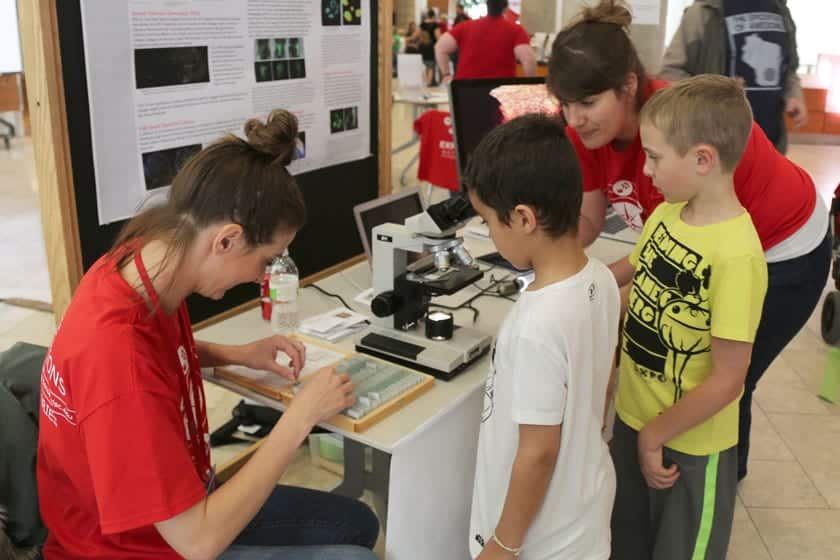 Ellen Arena (right) and Kristy Wendt demonstrate a microscopy activity during a Science Expeditions event at the Discovery Building.
Ellen Arena (right) and Kristy Wendt demonstrate a microscopy activity during a Science Expeditions event at the Discovery Building. 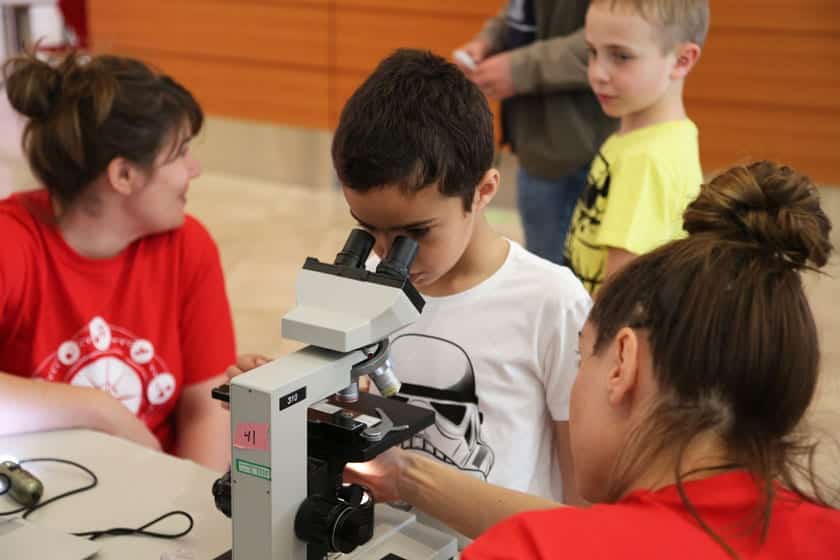 A young visitor looks at cell samples under a microscope during a Science Expeditions event at the Discovery Building. The activity was developed as part of the Discovery Incubator program.
A young visitor looks at cell samples under a microscope during a Science Expeditions event at the Discovery Building. The activity was developed as part of the Discovery Incubator program. 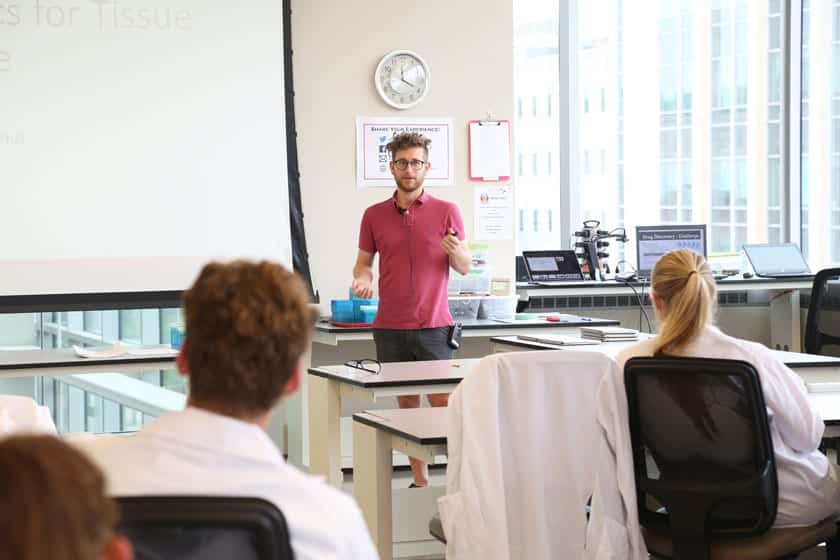 Teddy de Groot, formerly of the Beebe lab and currently a lead engineer at Lynx Biosciences, explains microfluidics technology to students at the 2017 Rural Summer Science Camp.
Teddy de Groot, formerly of the Beebe lab and currently a lead engineer at Lynx Biosciences, explains microfluidics technology to students at the 2017 Rural Summer Science Camp. 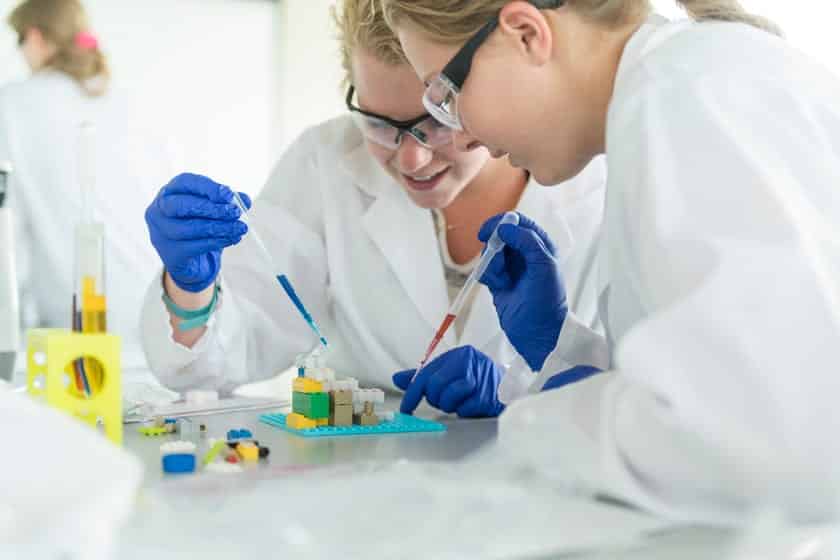 Students used specially-designed blocks, compatible with traditional Legos, to send liquid through tiny channels and learn how scientists use microfluidics technology to advance their research.
Students used specially-designed blocks, compatible with traditional Legos, to send liquid through tiny channels and learn how scientists use microfluidics technology to advance their research. 